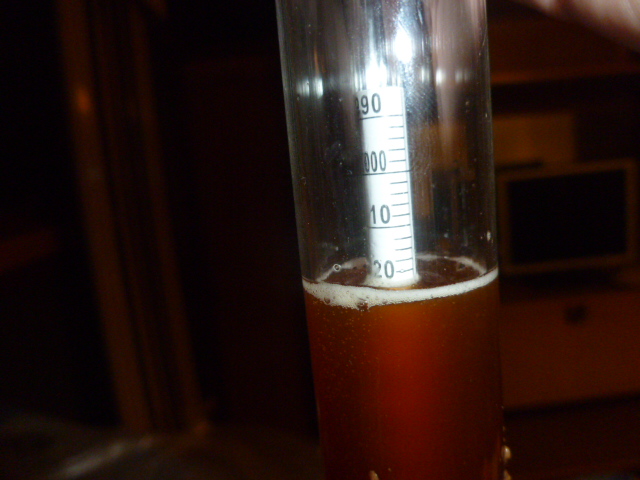I'm brewing my first batch, an Irish Red. Went into Fermenter Last Thursday, 5 days ago... The airlock went crazy for about 2 days, had consistent temp of fermentation chamber at 64*, between 2nd and 3rd day the A/C blew the fuse and it was 74* when I found out...
I went to take my first gravity reading as I hadn't seen any movement and this is what I saw... being my first batch I have no clue if this is normal... It doesn't smell as I expected, but like I say, being my first batch idk if it is normal or not...
I also went ahead and took a gravity reading 1.022 is what I was seeing, but using my new thief I bought had a few inches of what appeared to be yeast mixed in so I'm unsure how accurate the reading was...
So Suggestions from here?
(BTW I drained out the lower portion of the thief and tasted it the top... basically taste like a flat Irish Red, but the smell on top of the fermenter isn't an Irish Red by any means...)



I went to take my first gravity reading as I hadn't seen any movement and this is what I saw... being my first batch I have no clue if this is normal... It doesn't smell as I expected, but like I say, being my first batch idk if it is normal or not...
I also went ahead and took a gravity reading 1.022 is what I was seeing, but using my new thief I bought had a few inches of what appeared to be yeast mixed in so I'm unsure how accurate the reading was...
So Suggestions from here?
(BTW I drained out the lower portion of the thief and tasted it the top... basically taste like a flat Irish Red, but the smell on top of the fermenter isn't an Irish Red by any means...)





